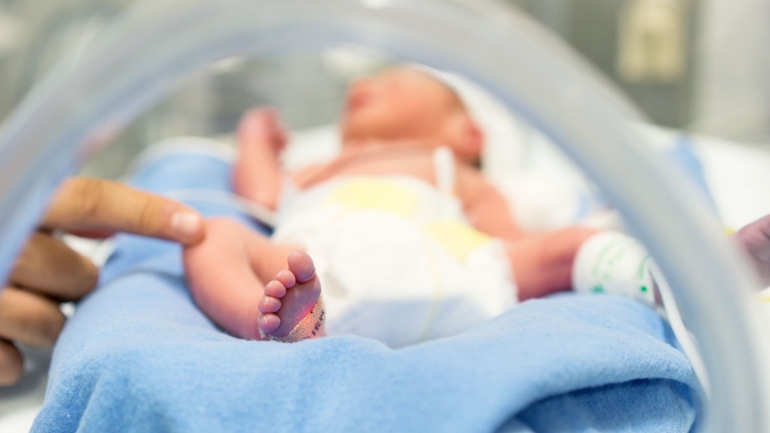Preterm Labor Symptoms
Recognizing preterm labor symptoms is not as easy as you might expect. This is especially true if you happen to be one of those expectant mothers who has many Braxton-Hicks contractions in late pregnancy, since it can be tricky to know the difference between the two. Here is what you should know about the signs of preterm labor.
Pelvic Pressure is a Preterm Labor Symptom
If you notice a pressure in your pelvis, as if the baby was pushing down on your pelvic floor, this is one possible sign of preterm labor. Some mothers also may interpret this sensation of pelvic pressure as rectal or vaginal pressure.

Low Dull Backache Is Another Sign of Preterm Labor
Preterm labor may be accompanied by a pain deep that is quite low in your back. Often this dull backache does not come and go as it does when your back is feeling stiff and you need to move to change positions. This type of dull backache that often accompanies preterm labor is more constant.
One Symptom of Preterm Labor is Menstrual-Like Cramps
Often when women experience the beginning of preterm labor, it starts to feel like the beginning of their period. Mothers may start to notice that the cramps feel like a menstrual cramp or that there is “activity going on” in their uterine area. You might observe whether or not these menstrual-like cramps are more frequent or more intense over time.
A Change or Increase in Vaginal Discharge is Another Sign of Preterm Labor
Some expectant mothers might notice that their normal pattern of vaginal discharge changes when there is a threat of preterm labor. Many women recognize that they start to have an increase in vaginal discharge as they get closer to their due date. However, you might notice this sign, as well as if there are any other symptoms, as a possibility that you could be at greater risk for preterm labor.
Uterine Contractions that Occur Every Ten Minutes or Less Could Signal Preterm Labor
One of the most recognizable preterm labor symptoms is having uterine contractions that come 10 minutes or closer together. These contractions will feel like a tightening in your abdomen that is often noticeably different than a Braxton-Hicks contraction. In some cases, these uterine contractions will progress and become closer. It is not unusual for these uterine contractions to be painful; however, sometimes they are not painful to the mother.
Another Sign of Preterm Labor is Intestinal Cramping
It is possible for some mothers to see intestinal cramping occur as a preterm labor symptom. Mothers may have loose bowel movements, almost like diarrhea, that accompanies the intestinal cramping. However, other mothers will not have diarrhea.
While the signs of preterm labor are varied and may not be the same for every mother, it is important to know preterm labor symptoms and whether or not you should be tested for preterm labor.
If you notice any of the above signs from 20 to 37 weeks of pregnancy, contact your care provider as soon as possible if you have any of these symptoms.